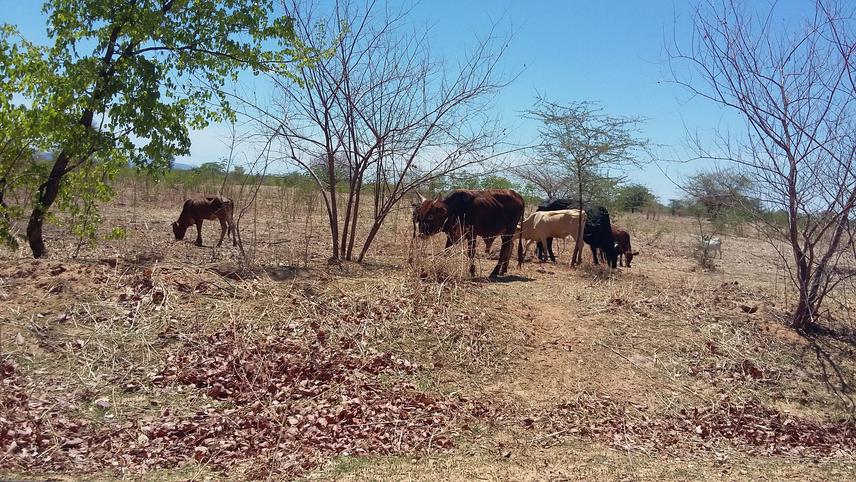Steven Matema
The project aims to build a database of human-wildlife interactions and hunting data in order to guide wildlife conservation and human-wildlife conflict mitigation strategies in Mbire district.

Cattle and goats grazing in dry Mbire district. The dry conditions make riparian wetlands human-wildlife conflict hot spots as people, livestock and wildlife share these key resources.
Mbire district in Zimbabwe, which has recently become part of the Lower Zambezi-Mana Pools Transfrontier Conservation Area, is home to mega-fauna of global conservation importance that it shares with neighbouring protected areas. Here, rapid agricultural expansion and immigration-fuelled population growth threatens the survival of wildlife species such as elephants, buffalo and lion. The presence of these species also threatens local livelihoods through crop/livestock depredation. Mbire Rural District Council (RDC) implements the Communal Areas Management Programme for Indigenous Resources (CAMPFIRE) under which smallholder agropastoralists, safari operators and the RDC share in revenue from safari hunting on communal land. The CAMPFIRE programme sought to simultaneously meet conservation and development goals through revenue from safari hunting and tourism, by investing part of the revenue in improving local infrastructure and reducing poverty. These benefits were to act as incentives for reducing poaching and retaliatory killing of wildlife.
More recently, local people have begun to contest the (perceived low) wildlife off-take and quota setting under CAMPFIRE because farmers are of the view that the populations of buffalo and elephant are increasing. They thus expect increasing hunting quotas or lethal control of problem mammal species. In contrast, wildlife management authorities argue that wildlife populations are going down and hence prefer non-lethal control. To save mega fauna in Mbire district, legal off-take need to be done sustainably based on comprehensive scientific data. Thus, this project is going to build a database – through participatory documentation and analysis with the local people – of hunting data and human-wildlife conflicts.
By collecting data on wildlife movements and routine locations, the project seeks to gain a better understanding of spatial-temporal dynamics of habitat/resource use and thus better inform land-use planning and human-wildlife conflict mitigation measures. In the context of Zimbabwe’s (CAMPFIRE) and Transfrontier Conservation Areas, the project simultaneously seeks to provide evidence that commodification of wildlife may work/not work in the long term as a strategy to save wildlife.